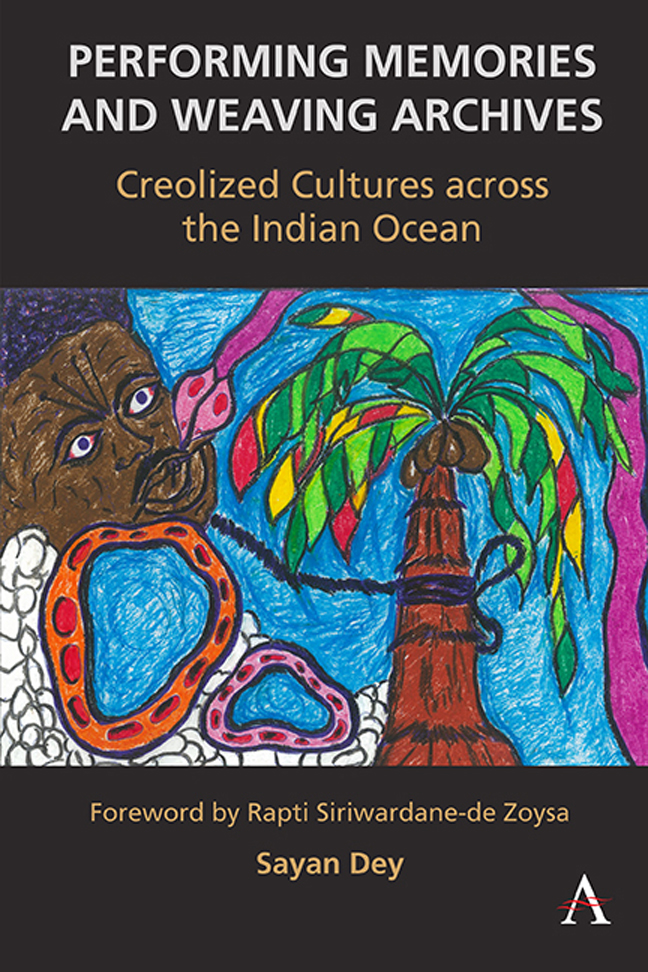Book contents
3 - Spiritual Memories
Published online by Cambridge University Press: 29 February 2024
Summary
Introduction: Spiritual Relationalities of the Ocean
The history of the creolized spiritual practices of the African Diaspora in India and the Indian Diaspora in South Africa unpacks complex narratives of “sacredscapes” ( Jeychandran 2019, p. 17) that emerged around the Indian Ocean littorals during the movements of the slaves and indentured laborers. Makrand Mehta in “Gujarat Sufis, “Sants,” and the Indian Ocean World in Medieval Times” (2019) observes that “along with the exchange of commodities, information, and ideas, knowledge was also shared” (p. 163). The movements of the indentured Indian laborers to South Africa and the African slaves to India gave birth to “multiple worldings in an emergent world of many worlds” (Uimonen and Masimbi 2021, p. 35) through the development of porous and fluid creolized spiritual practices in their respective geographical spaces in the forms of coastal shrines and transoceanic worship cultures. The creolization is specifically visible in terms of the emergence of transoceanic and interreligious folklores; the preparation of creole foods as offerings to gods, goddesses, and devotees; the usage of Afro-Indian creole languages in religious songs; and the usage of multicultural worship procedures.
It is also important to note that with respect to the creolized spiritual practices of the Indian Diaspora in South Africa, this chapter has exclusively focused on the spiritual practices of the Indian indentured laborers because the Hindus who came as passenger Indians mostly from Gujarat and Uttar Pradesh rejected any forms of transcultural influence on Hinduism, adhered to high caste puritan religious practices, and did not regard the indentured Indians as “genuine” Hindus because of their tendency to interweave Hindu spiritual practices with local African and other spiritual practices. The economically flourishing situation of the Hindu passenger Indians enabled them to bring in Brahmin priests from India (Kumar 2012; Lal and Vahed 2013). The Brahmin priests were brought from India because they were “informed largely by the Sanskrit ritual texts” (Kumar 2012, p. 392) and could assist the high-caste Hindu passenger Indians to re-establish their puritan Hindu practices in South Africa. Such an adherence to high-caste puritan Hindu religious practices has led to the foundation of organizations like, South African Hindu Mahasabha and the Hindi Shiksha Sangh.
- Type
- Chapter
- Information
- Performing Memories and Weaving ArchivesCreolized Cultures across the Indian Ocean, pp. 27 - 46Publisher: Anthem PressPrint publication year: 2023

